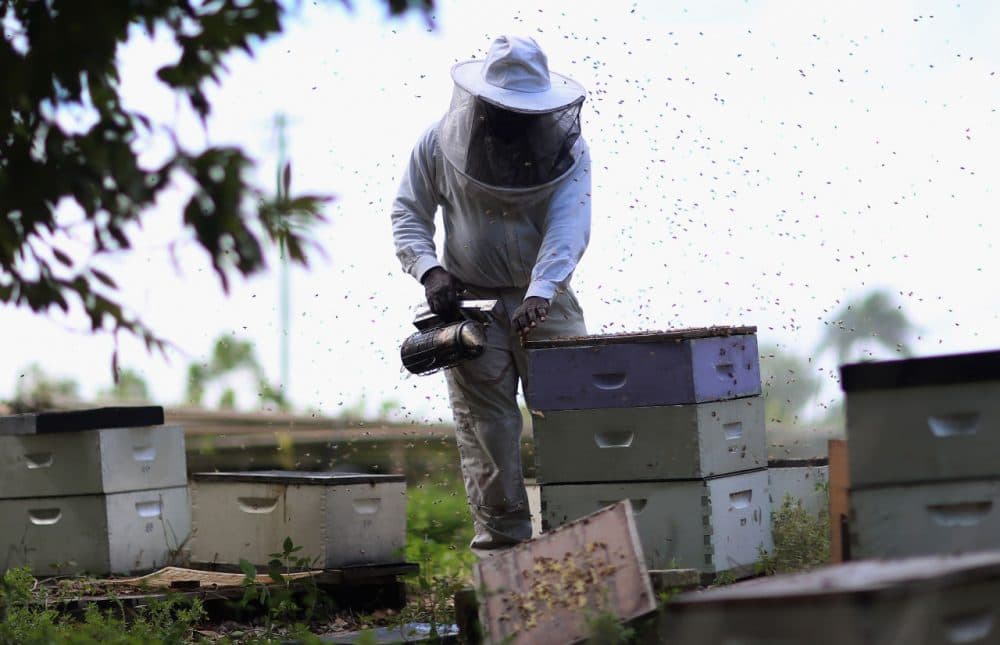Advertisement
Honeybee Population Continues To Decline
Resume
A new survey shows that 44 percent of the country's honeybee colonies died in the past year. It was the second year in a row that losses have surpassed 40 percent, and now there are signs that the die-off is spreading into the summer months. Here & Now’s Jeremy Hobson speaks with May Berenbaum, professor and head of the Department of Entomology at the University of Illinois Urbana-Champaign about the decreasing bee population.
Guest
- May Berenbaum, entomologist, head of Dept. of Entomology University of Illinois at Urbana-Champlaign. She tweets @MayBerenbaum.
This segment aired on May 11, 2016.